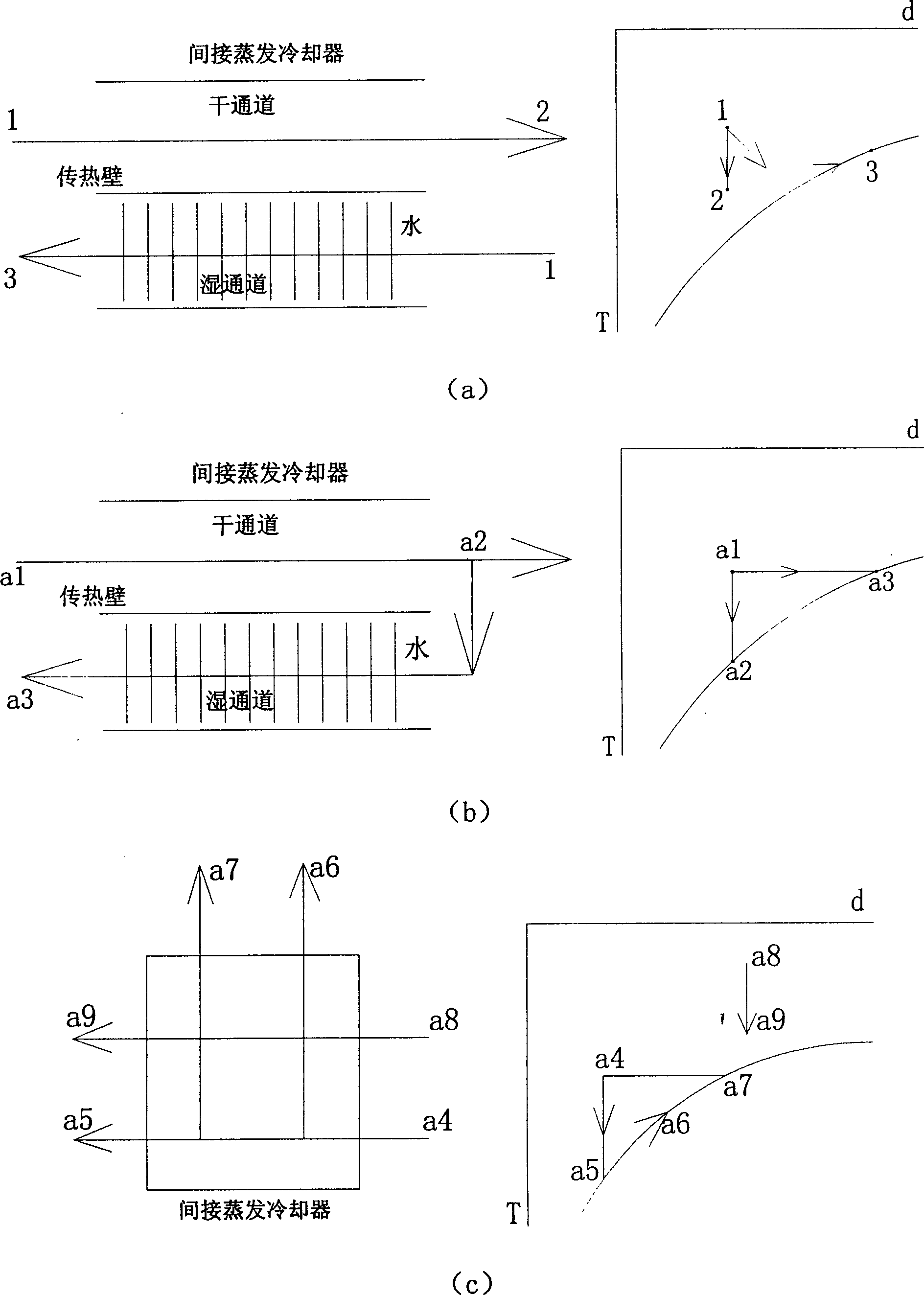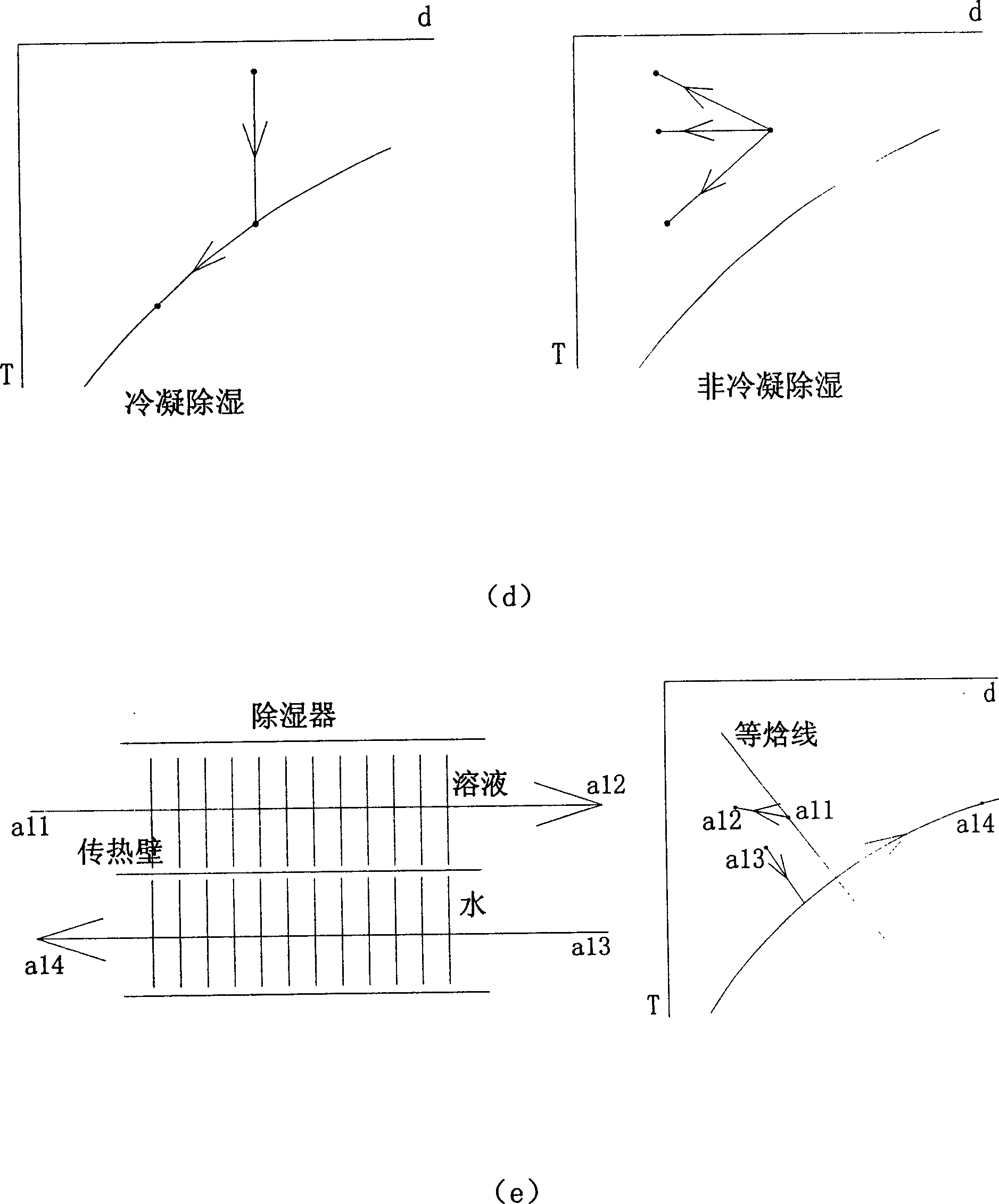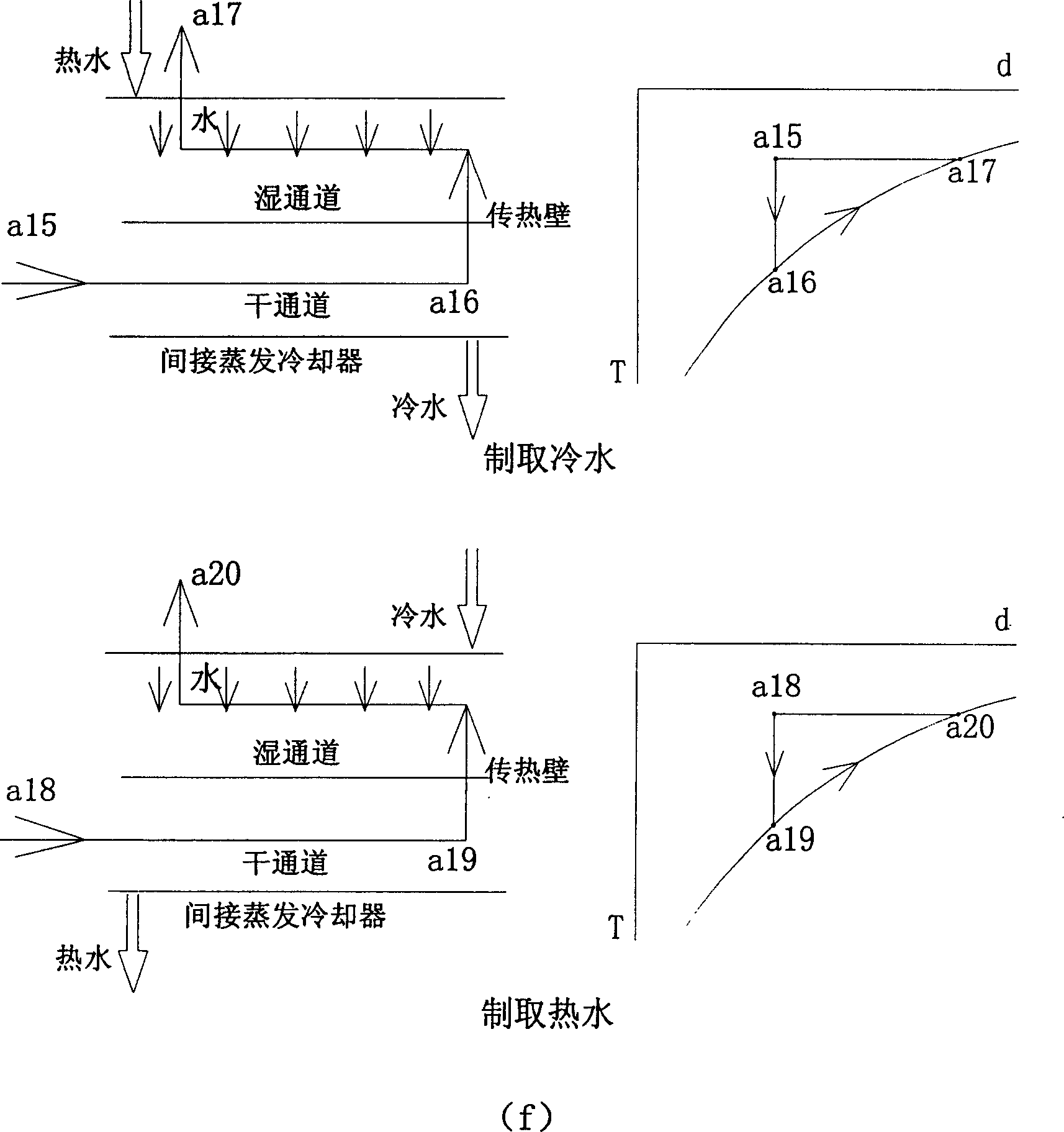Method for adjusting indoor air environment
A technology for indoor air and environment regulation, which is applied in air conditioning systems, heating methods, space heating and ventilation, etc. It can solve problems such as loss, high energy consumption, and failure to use indoor air to discharge heat, so as to reduce energy consumption and increase indoor temperature. net cooling effect
- Summary
- Abstract
- Description
- Claims
- Application Information
AI Technical Summary
Problems solved by technology
Method used
Image
Examples
Embodiment Construction
[0032] The present invention will be described in detail below according to the accompanying drawings.
[0033] Such as figure 1 As shown, the indirect evaporative cooler includes two channels, dry and wet. When a stream of gas flows into the indirect evaporative cooler, a part of the gas is humidified in the wet channel, and the liquid evaporates to absorb the heat of the gas in the dry channel, and the gas in the dry channel is equalized. For wet cooling, the wet bulb temperature of the gas in the wet channel can theoretically be equal to the initial dry bulb temperature of the gas in the dry channel. There are two situations for the dry bulb temperature of the gas in the dry channel. In one case, the dry bulb temperature can theoretically reach the wet bulb temperature of the gas sent into the wet channel, such as figure 1 As shown in (a); in another case, the dry bulb temperature can theoretically reach the dew point temperature of the gas sent into the wet channel, such ...
PUM
 Login to View More
Login to View More Abstract
Description
Claims
Application Information
 Login to View More
Login to View More - R&D
- Intellectual Property
- Life Sciences
- Materials
- Tech Scout
- Unparalleled Data Quality
- Higher Quality Content
- 60% Fewer Hallucinations
Browse by: Latest US Patents, China's latest patents, Technical Efficacy Thesaurus, Application Domain, Technology Topic, Popular Technical Reports.
© 2025 PatSnap. All rights reserved.Legal|Privacy policy|Modern Slavery Act Transparency Statement|Sitemap|About US| Contact US: help@patsnap.com



